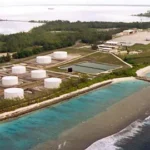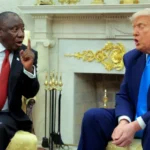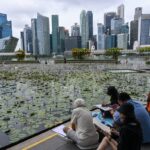In the realm of international diplomacy, maintaining composure under pressure is a testament to leadership strength. Cyril Ramaphosa, South Africa’s President, demonstrated this resilience during a period marked by a series of orchestrated diplomatic challenges from then-U.S. President Donald Trump. Rather than succumbing to provocation, Ramaphosa exemplified measured restraint, strategic diplomacy, and unwavering focus on South Africa’s interests.
Context of the Diplomatic Tensions
The period in question saw Trump’s administration engaging in a series of public and private criticisms of South Africa. These ranged from allegations about land reform policies to economic disputes and perceived diplomatic snubs. The term “choreographed onslaught” refers to the calculated nature of these attacks—designed to influence public opinion and diplomatic relations—yet Ramaphosa responded with calm and strategic patience.
Ramaphosa’s Calm Under Fire
Several key factors contributed to Ramaphosa’s poised response:
- Strategic Diplomacy and Focus on National Interests
Recognizing the importance of maintaining South Africa’s sovereignty and international standing, Ramaphosa avoided retaliatory rhetoric. Instead, he emphasized constructive dialogue, reaffirmed South Africa’s commitment to multilateralism, and highlighted mutual benefits of cooperation. - Respecting Diplomatic Protocols
Despite provocative statements, Ramaphosa adhered to diplomatic norms, choosing not to escalate tensions. His public statements remained measured, emphasizing partnership and mutual respect rather than confrontation. - Leveraging International Support
Ramaphosa skillfully engaged with other global leaders and international institutions. By rallying support and emphasizing South Africa’s ongoing reforms and economic resilience, he mitigated the impact of external pressure. - Internal Focus and Economic Reforms
Amid external pressures, Ramaphosa concentrated on internal reforms, including anti-corruption measures and economic revitalization efforts. This strategy demonstrated leadership’s focus on tangible progress rather than reactive diplomacy. - Communication and Messaging
His communication style was deliberate and measured, avoiding inflammatory language. This approach helped prevent further escalation and maintained diplomatic decorum.
Evidence of Composed Leadership
- Public Statements: Throughout the period, Ramaphosa’s speeches and interviews reflected a focus on dialogue and cooperation. For example, during the United Nations General Assembly, he reiterated South Africa’s commitment to peaceful resolution of disputes and international collaboration.
- Engagement with the US: Despite the public criticisms, Ramaphosa maintained channels of communication with U.S. officials, emphasizing dialogue over confrontation. This diplomatic tact helped de-escalate potential conflicts.
- International Recognition: Global leaders and organizations recognized Ramaphosa’s calm and strategic approach, often citing his leadership as stabilizing during turbulent diplomatic waters.
Lessons from Ramaphosa’s Leadership
His ability to keep cool under pressure underscores the importance of diplomacy, patience, and strategic focus in international relations. Rather than engaging in retaliatory rhetoric, Ramaphosa demonstrated that leadership involves resilience, measured responses, and prioritization of long-term national interests.
Conclusion
Cyril Ramaphosa’s response to Donald Trump’s orchestrated onslaught exemplifies effective leadership on the global stage. His calm, strategic, and principled stance not only protected South Africa’s interests but also reinforced the importance of diplomacy over confrontation. In an era where international conflicts and political provocations are frequent, Ramaphosa’s example offers a blueprint for leaders facing similar challenges: stay composed, focus on dialogue, and uphold national dignity.
Email Us on editorial@nnafrica.com













